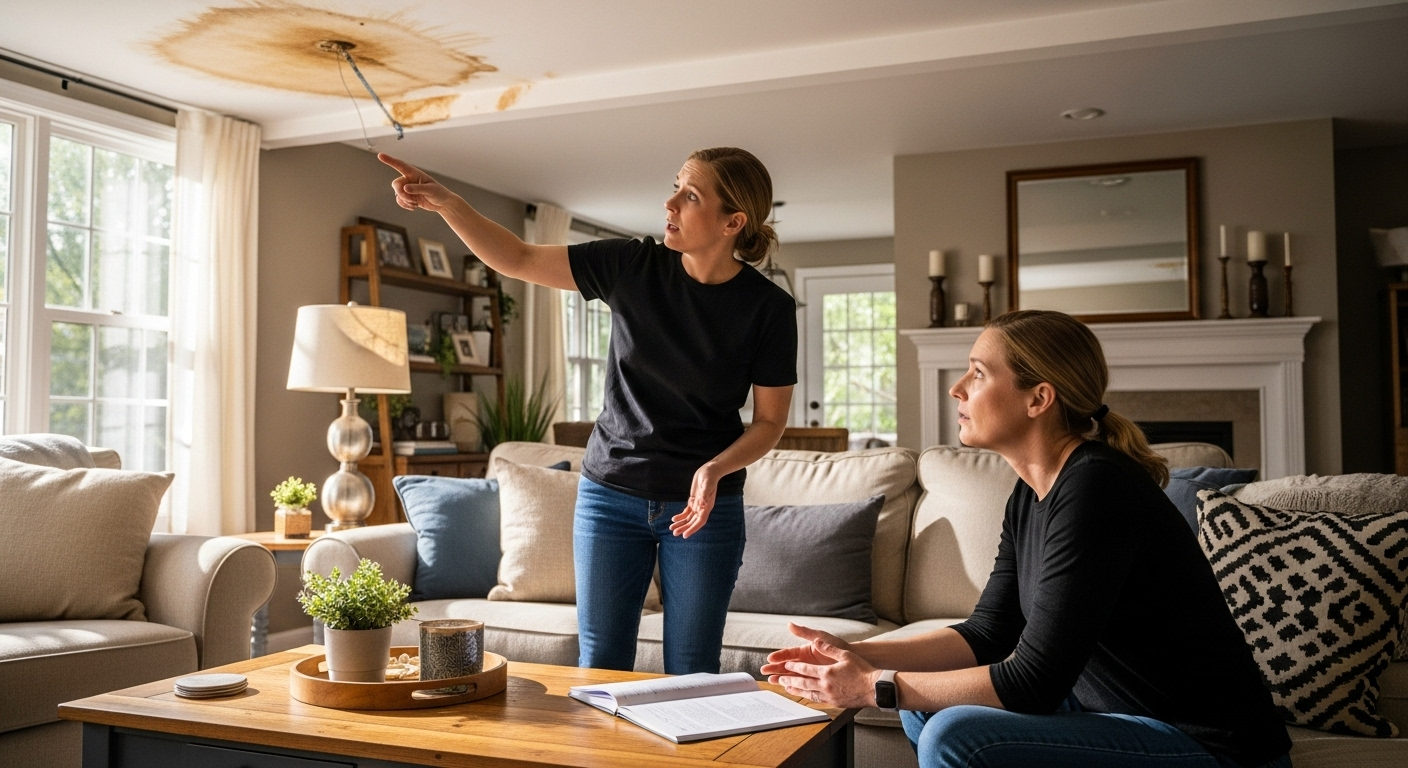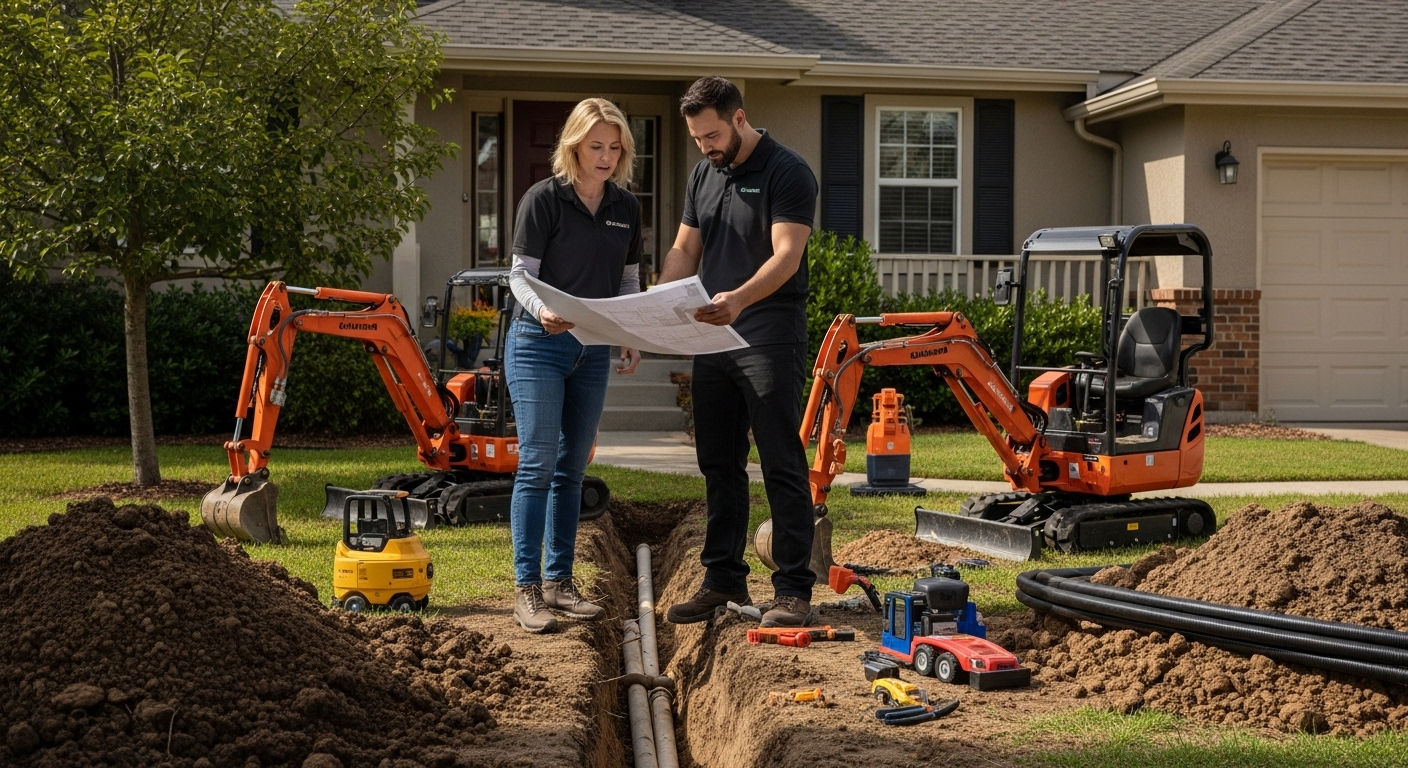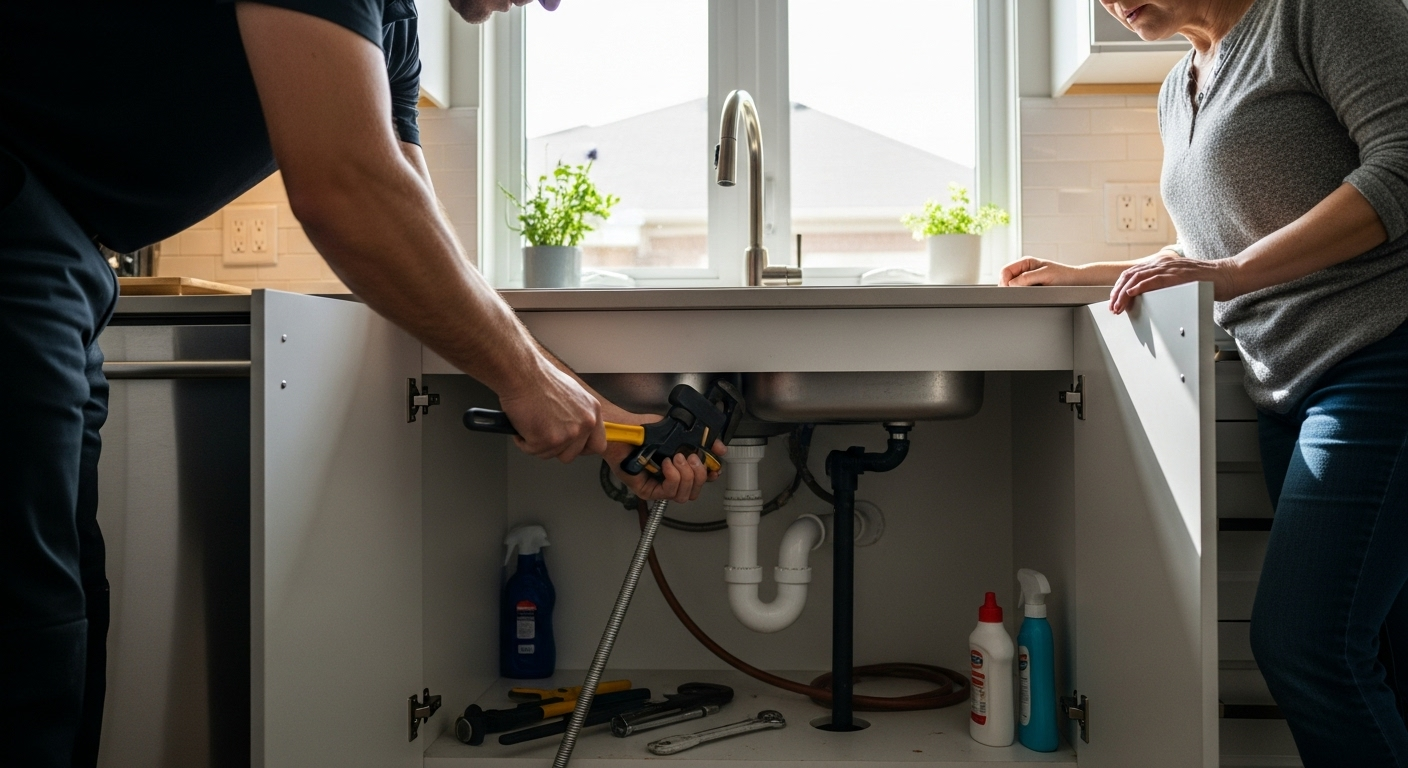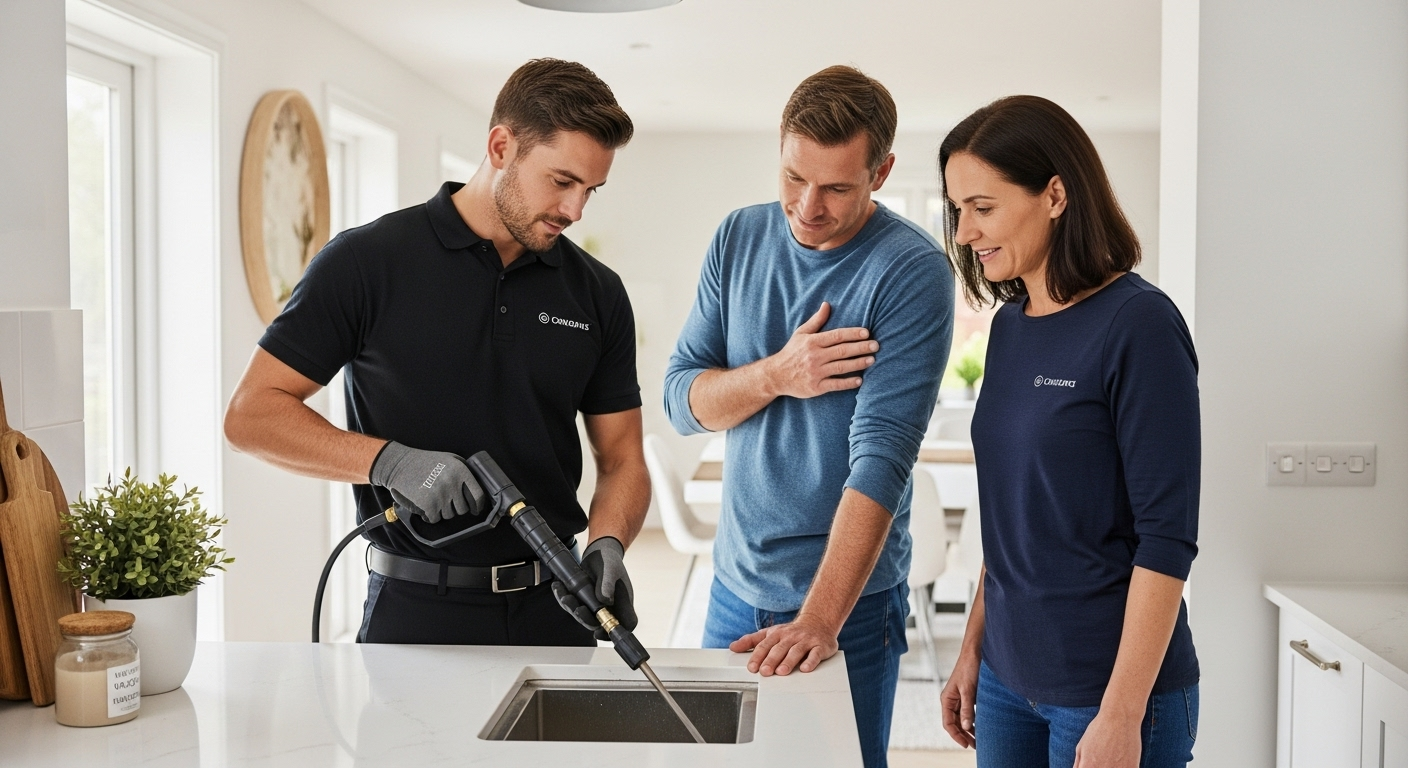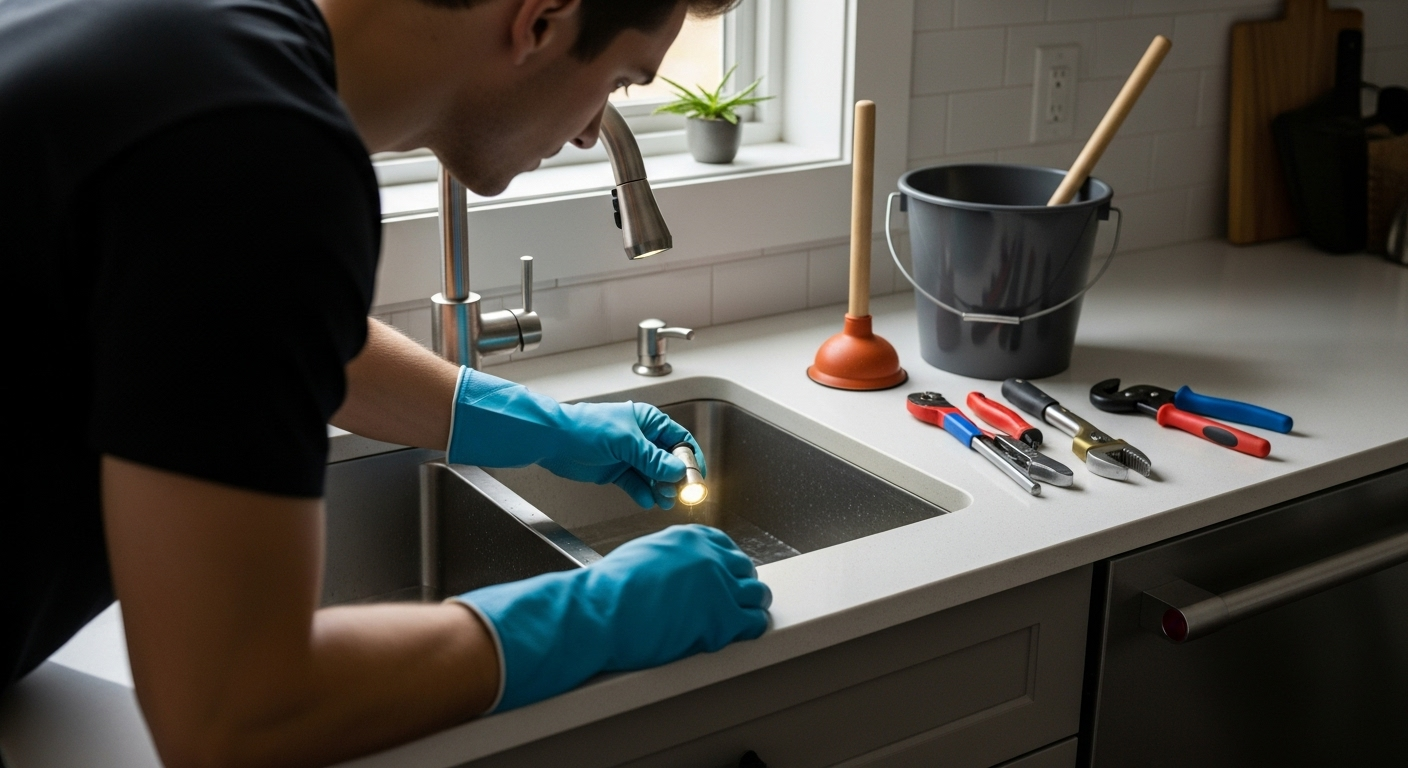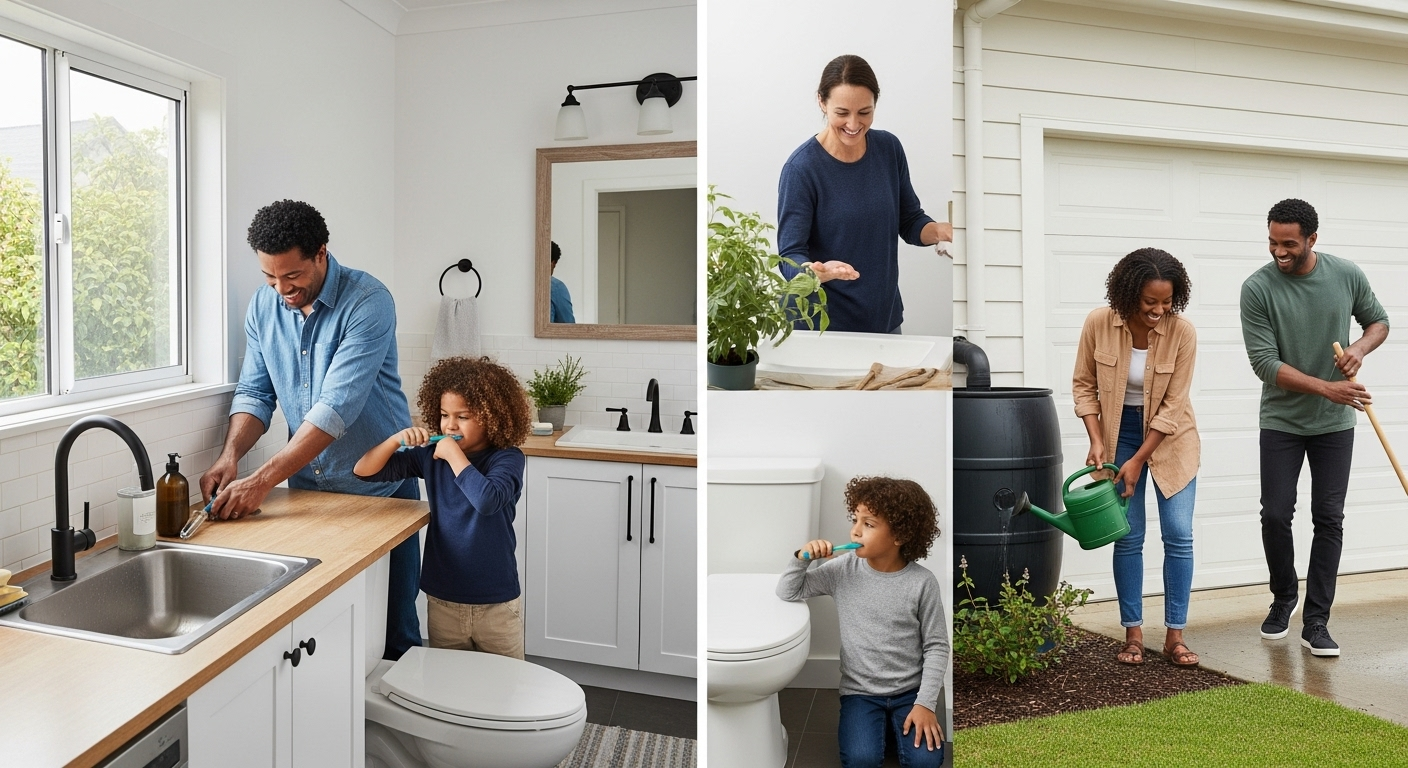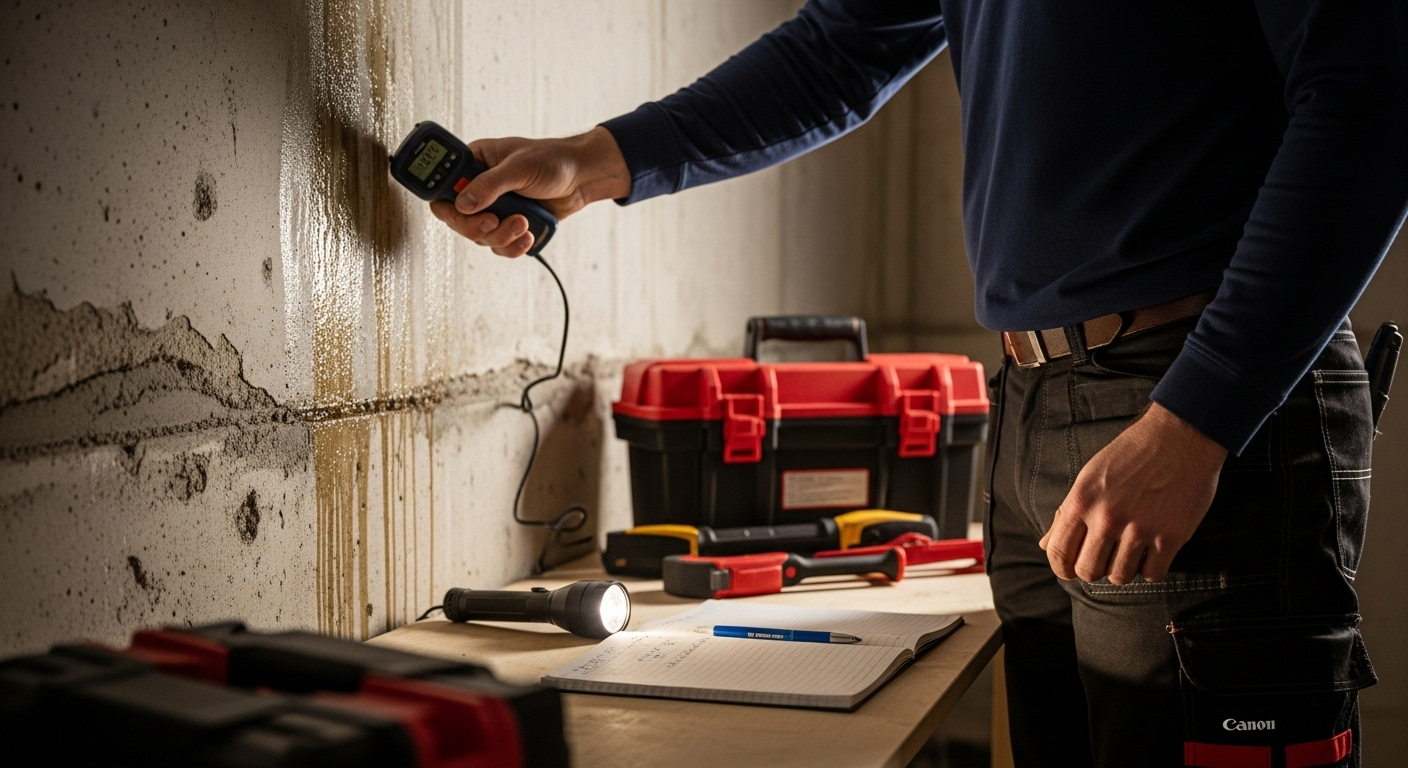Essential Winter Plumbing Tips for Toronto Homeowners
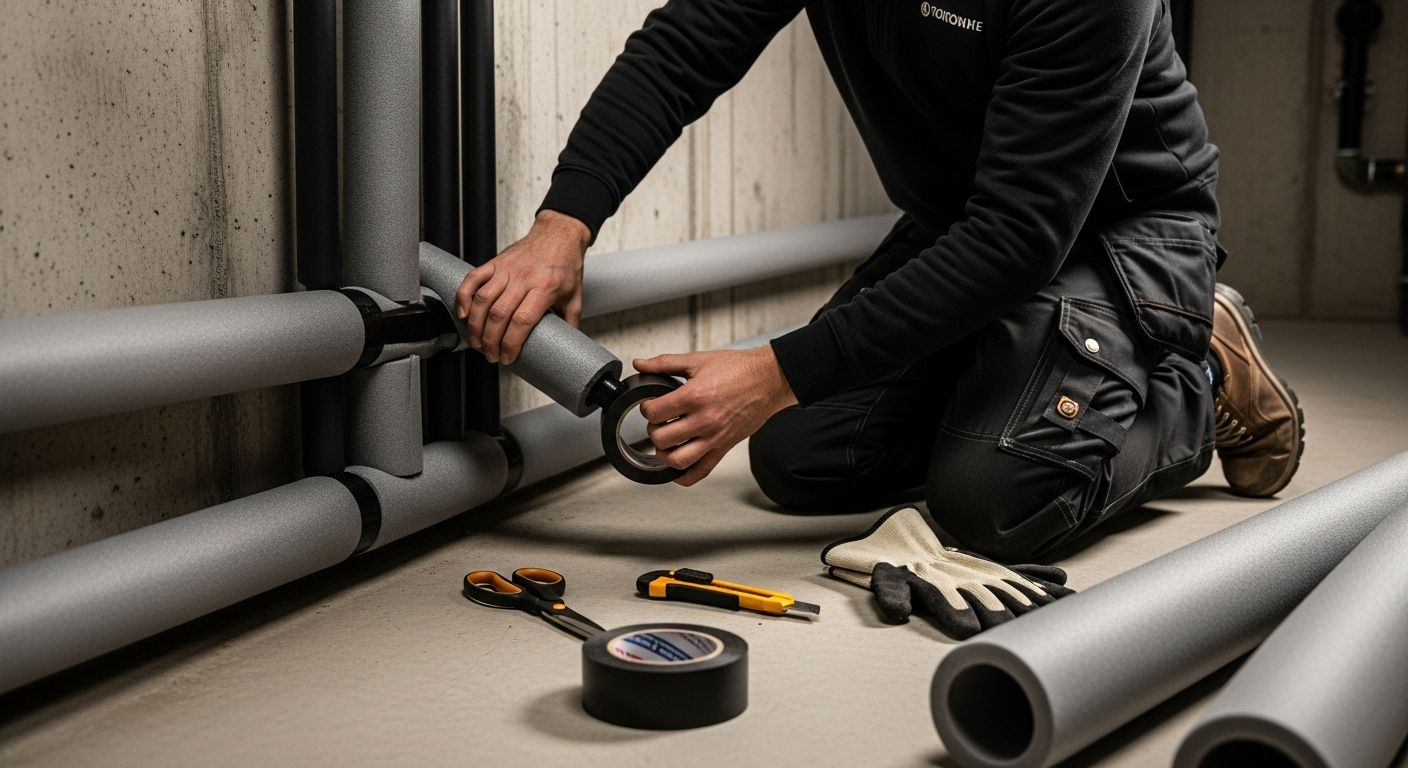
Toronto winters can be brutal on your home’s plumbing system, with temperatures frequently plunging below freezing. Most people do not realize that just one burst pipe from freezing can leak over 250 gallons of water in a single day . Surprising, right? Yet the biggest water nightmare usually happens in the places you least expect, like a forgotten outdoor tap or a crawl space corner. Here is what you need to know if you want your pipes to survive another deep freeze.
Table of Contents
Quick Summary
| Key Point | Explanation |
|---|---|
| 1. Insulate Exposed Pipes Thoroughly | Use foam sleeves or heat tape to cover all exposed pipes, especially in unheated areas, to prevent freezing. |
| 2. Disconnect and Drain Outdoor Faucets | Remove hoses and drain spigots to prevent water from freezing inside pipes and causing cracks. |
| 3. Maintain Your Heating System | Inspect your heating system regularly and replace filters to ensure efficiency and prevent breakdowns during winter. |
| 4. Monitor Indoor Temperatures and Humidity | Keep temperatures above 55°F and humidity between 30-40% to protect plumbing from moisture and freezing risks. |
| 5. Prepare a Plumbing Emergency Kit | Assemble essential tools and information to quickly address plumbing emergencies before they escalate. |
Step 1: Insulate Exposed Pipes and Hoses
Preparing your home’s plumbing for Toronto’s harsh winter begins with protecting your most vulnerable pipes and hoses from freezing temperatures. Exposed pipes, particularly those located in unheated areas like garages, attics, crawl spaces, and near exterior walls, are at the highest risk of freezing and potential catastrophic damage.
Start by conducting a thorough inspection of your home’s plumbing infrastructure. Walk through your basement, garage, and any exterior spaces looking for pipes that are directly exposed to cold air. Pay special attention to pipes running along exterior walls or in uninsulated spaces. For these areas, read our guide on preventing frozen pipes to understand the full scope of protection needed.
To insulate pipes effectively, you’ll want to purchase foam pipe sleeves or heat tape from your local hardware store. Measure the length of pipes needing protection and purchase enough insulation material to cover them completely. Foam pipe sleeves are particularly effective , providing a protective barrier that helps maintain consistent pipe temperatures and prevents freezing.
When installing insulation, ensure you cover every inch of exposed pipe, including joints and connections. Gaps in insulation can create weak points where freezing might occur . For pipes in extremely cold areas, consider using heat tape underneath the foam insulation for an extra layer of protection. Secure the insulation tightly with weatherproof tape, making certain there are no loose sections that could allow cold air to penetrate.
Outdoor hoses require special attention. Before winter arrives, disconnect all garden hoses from exterior spigots. Drain the hoses completely and store them in a warm, dry location . For the exterior spigots themselves, install insulated hose bib covers which create a protective shell against freezing temperatures. These covers are inexpensive and can prevent significant potential water damage.
Verify your insulation work by checking for any remaining exposed pipe sections. Run your hand along insulated pipes to ensure complete coverage. On particularly cold nights, consider letting faucets connected to vulnerable pipes drip slightly, which can help prevent freezing by keeping water moving.
By taking these proactive steps, you’ll significantly reduce the risk of pipe freezing and potential water damage during Toronto’s coldest months. Proper insulation not only protects your plumbing but can also help reduce energy costs by maintaining more consistent pipe temperatures throughout your home.
Step 2: Disconnect and Drain Outdoor Faucets
Protecting your home’s exterior plumbing from Toronto’s brutal winter starts with a critical task: completely disconnecting and draining all outdoor faucets. This step prevents water from freezing inside pipes, which can cause devastating cracks and expensive repairs. Learn more about avoiding outdoor faucet leaks to understand the full implications of this important winterization process.
Begin by gathering essential tools for the job: an adjustable wrench, insulated hose bib covers, and a storage area for your garden hoses. Walk around your property and locate every exterior water connection , including side yard spigots, rear garden faucets, and any additional water outlets. Each connection requires careful attention to prevent potential winter damage.
Start by removing all attached garden hoses, irrigation system connections, and any other equipment connected to outdoor faucets. Completely drain these hoses by elevating one end and allowing water to flow out naturally. Once drained, coil them neatly and store in a dry, warm location like a garage or basement. This prevents cracking and extends the life of your garden equipment.
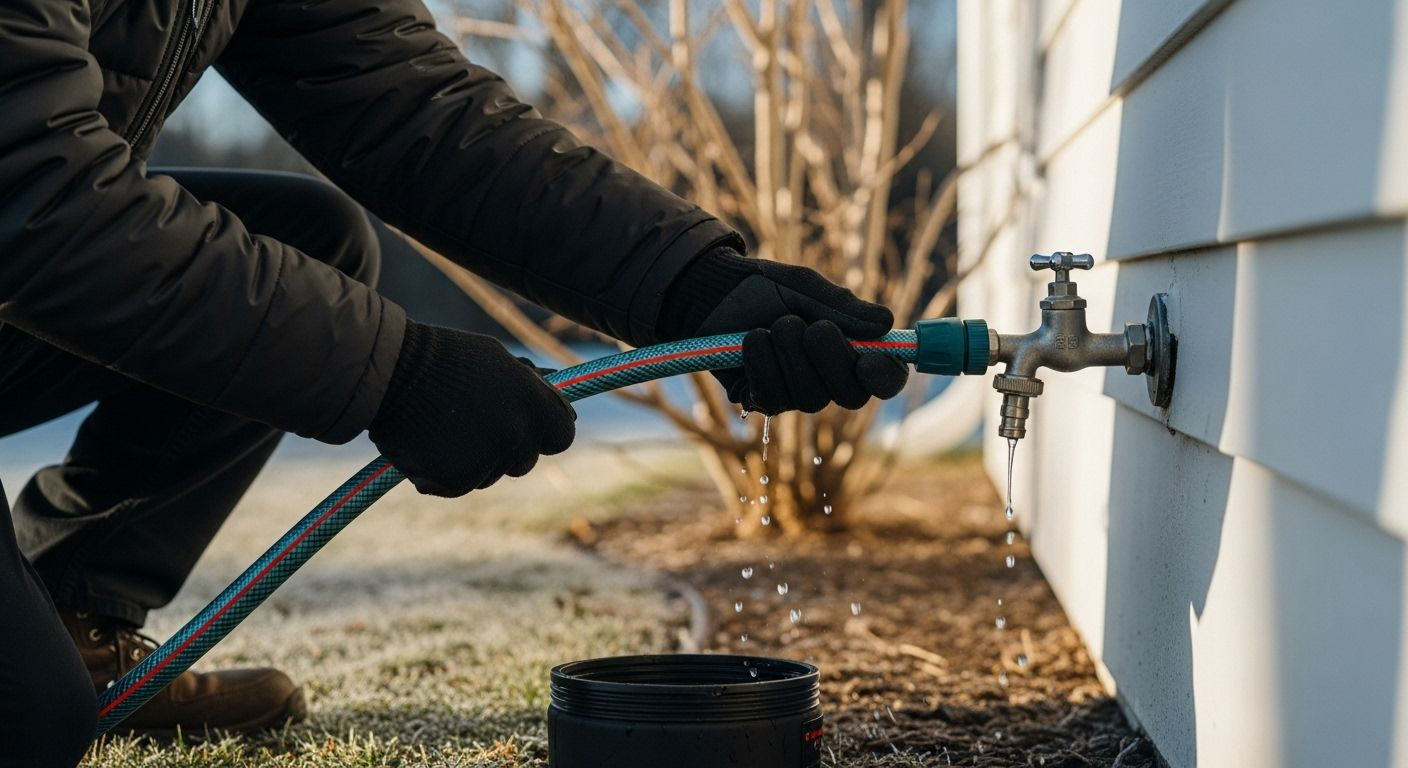
Next, locate the interior shut-off valves for each exterior faucet. These are typically found in basements, crawl spaces, or utility rooms. Turn these valves completely off , which stops water from flowing to the exterior connections. After closing the interior valve, return to the outdoor faucet and open it fully, allowing any remaining water to drain completely. This two-step process ensures maximum water removal and minimizes freezing risks.
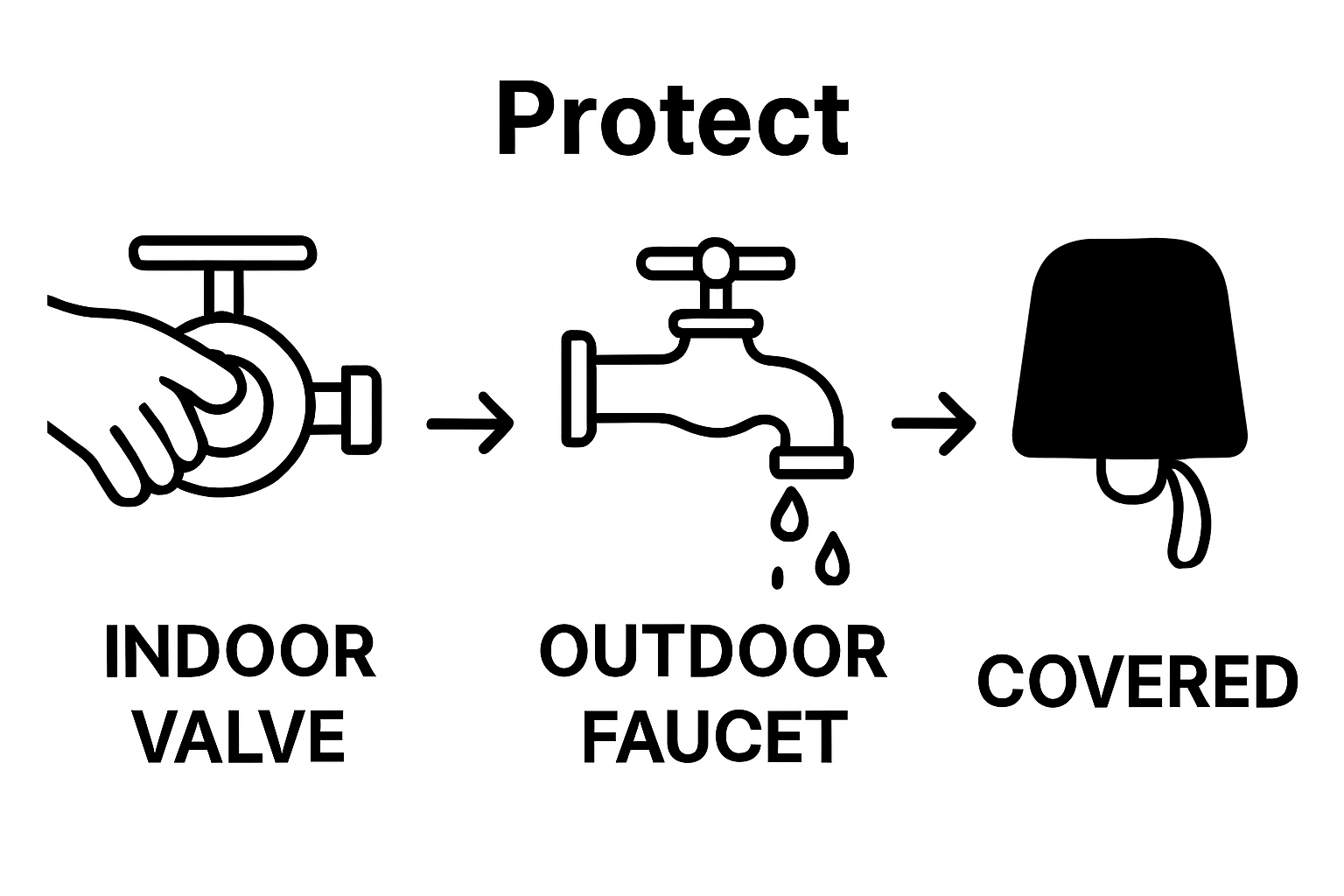
For added protection, install insulated hose bib covers on each exterior faucet. These foam covers create an additional thermal barrier, helping prevent freezing even in the coldest Toronto winters. Press the cover firmly around the faucet, ensuring a tight seal that blocks cold air from penetrating.
Verify your work by checking that all faucets are dry, hoses are stored, and protective covers are securely in place. On particularly cold nights, consider an extra layer of protection by wrapping vulnerable faucets with additional foam insulation or heat tape.
By methodically disconnecting and draining your outdoor faucets, you’re taking a crucial step in protecting your home’s plumbing infrastructure from winter’s harshest conditions. A little preparation now can save significant time, money, and stress during the cold months ahead.
Step 3: Check and Maintain Your Heating System
Your home’s heating system is the critical defense against Toronto’s freezing winter temperatures, making its proper maintenance essential for both comfort and plumbing protection. Proactive care prevents potential breakdowns and ensures your entire home remains warm and safe throughout the coldest months. Check out our comprehensive maintenance guide to understand the full scope of seasonal home maintenance.
Begin with a thorough visual inspection of your heating system. Locate your furnace or boiler and examine it carefully for any signs of wear, rust, or unusual damage. Look for corrosion around pipes, loose connections, or any unexplained moisture . Pay special attention to the area surrounding your heating unit, ensuring no debris, boxes, or flammable materials are stored nearby that could impede airflow or create potential safety hazards.
Filter maintenance is crucial for system efficiency. Locate your system’s air filter and carefully remove it to assess its condition. A clean filter allows your heating system to operate smoothly, reducing strain and potential mechanical issues. Replace disposable filters or clean reusable ones thoroughly . During winter, consider replacing filters more frequently than typical manufacturer recommendations, as homes tend to circulate more indoor air during colder months.
Thermostat calibration plays a significant role in both comfort and energy efficiency. Test your thermostat by setting it to different temperatures and observing how quickly and accurately your heating system responds. Programmable or smart thermostats offer enhanced control , allowing you to create heating schedules that minimize energy consumption while maintaining comfortable indoor temperatures. If your current thermostat seems unresponsive or inaccurate, consider professional replacement or recalibration.
Listen carefully to your heating system while it operates. Unusual sounds like banging, squealing, or persistent clicking could indicate underlying mechanical problems. These auditory clues often signal potential issues that, if addressed early, can prevent more expensive repairs later. Strange noises should prompt immediate professional inspection to prevent complete system failure during critical winter periods.
Verify your heating system’s performance by monitoring its operation over several days. Check that all rooms heat evenly, confirm no cold spots exist, and ensure the system starts, runs, and stops smoothly. Temperature consistency throughout your home indicates a well-maintained heating system.
By dedicating time to systematic heating system maintenance, you’re protecting not just your comfort, but your entire home’s plumbing infrastructure from potential winter-related damage. A well-maintained heating system serves as your first line of defense against freezing temperatures and unexpected mechanical failures.
Step 4: Monitor Indoor Temperatures and Humidity
Maintaining the right indoor temperature and humidity levels is crucial for protecting your home’s plumbing system during Toronto’s harsh winter months. Proper environmental control prevents moisture buildup, reduces the risk of pipe freezing, and safeguards your home’s structural integrity. Consistent monitoring becomes your first line of defense against potential winter-related plumbing disasters.
Start by investing in a reliable digital hygrometer and thermometer combination. Place this device in a central location , preferably near your main living area, to get an accurate reading of your home’s overall climate. Ideal indoor humidity during winter should hover between 30% and 40%, which helps prevent condensation on cold surfaces like windows, walls, and potentially vulnerable plumbing pipes.
Adjust your home’s heating system to maintain a steady temperature, even when you’re away. Keep your indoor temperature consistently above 55 degrees Fahrenheit , particularly in areas with exposed pipes like basements, crawl spaces, and near exterior walls. This steady warmth prevents pipe freezing and reduces stress on your home’s plumbing infrastructure. If you’re planning an extended absence, consider setting your thermostat to a minimum temperature that ensures pipes remain safely above freezing.
Address humidity challenges proactively by using strategic ventilation and dehumidification techniques. Run bathroom exhaust fans during and after showers to remove excess moisture. In kitchen areas, use range hoods when cooking to expel steam and moisture. Consider using portable dehumidifiers in areas prone to dampness , such as basements or rooms with poor air circulation. These steps help maintain optimal humidity levels and prevent potential moisture-related plumbing issues.
Pay special attention to areas with significant temperature variations. Cold exterior walls, windows, and poorly insulated spaces can create condensation points that might lead to moisture accumulation. Inspect these areas regularly for signs of moisture buildup , such as water droplets, frost, or slight discoloration. Use weatherstripping, add insulation, or apply thermal curtains to reduce temperature differentials and minimize condensation risks.
Verify your humidity management by consistently checking your hygrometer readings. Look for steady humidity levels and minimal temperature fluctuations. Watch for warning signs like persistent window condensation, musty odors, or visible mold growth, which indicate humidity levels are too high. Your goal is maintaining a stable, controlled indoor environment that protects both your comfort and your home’s plumbing system.
By dedicating time to monitoring and managing your indoor climate, you’re taking a proactive approach to winter home maintenance. These careful steps help prevent potential plumbing emergencies and ensure your home remains comfortable and protected throughout the coldest months.
Step 5: Prepare for Emergencies with a Plumbing Kit
Preparing for potential winter plumbing emergencies is not just about prevention, but having the right tools and knowledge to respond quickly when unexpected issues arise. Learn more about handling common plumbing emergencies to understand the full scope of potential challenges during Toronto’s harsh winter months.
Your emergency plumbing kit should be comprehensive and easily accessible , ideally stored in a central location where all household members can quickly locate it. Start by selecting a sturdy, waterproof container with a secure lid that can protect your tools from moisture and potential damage. This kit will be your first line of defense against sudden plumbing problems that could escalate rapidly during freezing temperatures.
Include essential tools that can help you manage minor emergencies and mitigate potential damage. Prioritize items that can help you stop water flow and temporarily seal leaks . A quality adjustable pipe wrench, waterproof duct tape, rubber pipe repair clamps, and a compact pipe repair kit are crucial components. Add a set of pliers with different sizes, a utility knife, and several sizes of pipe repair sleeves that can provide temporary sealing for small punctures or cracks.
Document management is equally important in your emergency preparedness. Keep a laminated card inside your kit with critical information, including the location of your main water shut-off valve, emergency plumbing contact numbers, and a basic step-by-step guide for stopping water flow. Include a waterproof flashlight with extra batteries , as plumbing emergencies often occur in poorly lit areas like basements or crawl spaces. A pair of waterproof work gloves and safety goggles will protect you during unexpected repairs.
Consider including absorbent materials to help manage water damage quickly. Waterproof tarps, heavy-duty towels, and a small wet-dry shop vacuum can help you control and minimize water spread while waiting for professional assistance. These items can make a significant difference in preventing extensive water damage during those critical first moments of a plumbing emergency.
Verify your emergency kit’s readiness by conducting a biannual review. Check that all tools are in good condition, batteries are fresh, and any consumable items like tape or repair sleeves have not expired. Demonstrate the kit’s location and contents to all household members, ensuring everyone knows how to access and use the tools if needed.
By investing time in preparing a comprehensive emergency plumbing kit, you’re not just protecting your home from potential winter disasters, but giving yourself peace of mind. Quick, informed action can mean the difference between a minor inconvenience and a major home repair emergency.
Secure Your Plumbing and Protect Your Toronto Home This Winter
Winter in Toronto puts your pipes and water lines to the ultimate test. This article showed that the risks of frozen or burst pipes and hidden leaks are real when cold weather hits. If your goal is true peace of mind, stop worrying about the stress that frozen pipes, unprotected outdoor faucets, or struggling heating systems can cause. With over 30 years of trusted experience, DrainWorks Plumbing is ready with the solutions you need. We help keep your home protected by professionally insulating pipes, upgrading water service lines, fixing leaks and fixture issues, repairing drain problems, and winterizing your plumbing the right way. Best of all, you will always get honest advice, clear up-front pricing, and service from our expert full-time team members only. See why we are repeatedly rated among the Best Plumbers in Toronto.
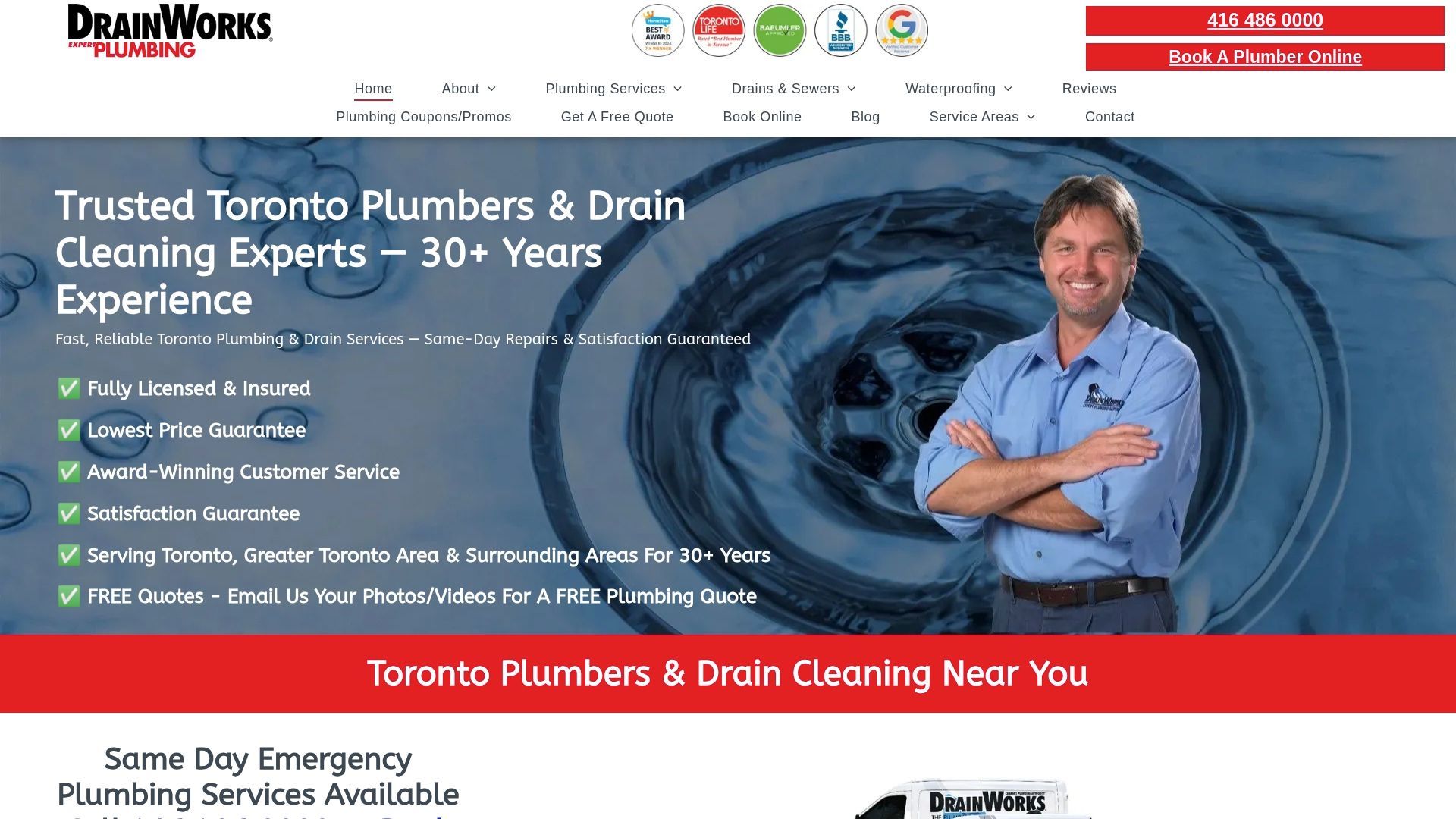
Do not let another Toronto winter catch you off guard. Book your professional winter plumbing inspection, pipe insulation, or same-day leak repair with us now. Protect your home’s plumbing system so you avoid costly damage and feel confident heading into the season. Visit DrainWorks Plumbing or check out our service overview to see how our licensed team can help. Your reliable, award-winning Toronto plumbing partner is just a click away.
Frequently Asked Questions
How can I prevent my pipes from freezing in winter?
To prevent your pipes from freezing, insulate exposed pipes in unheated areas with foam pipe sleeves or heat tape. Ensure that all garden hoses are disconnected and stored indoors. On particularly cold nights, let faucets connected to vulnerable pipes drip slightly to keep water flowing.
What should I do to prepare my outdoor faucets for winter?
To prepare outdoor faucets, disconnect and drain all garden hoses, then turn off the interior shut-off valves. Open the outdoor faucets to allow any remaining water to drain, and install insulated hose bib covers for added protection against freezing temperatures.
How do I maintain my heating system during winter?
Perform a visual inspection of your heating system, check and replace air filters regularly, and ensure your thermostat is functioning correctly. Consider using a programmable thermostat to manage heating efficiently and prevent sudden breakdowns.
What indoor humidity levels should I maintain during winter?
During winter, indoor humidity levels should ideally remain between 30% and 40%. Use a hygrometer to monitor humidity, and employ ventilation and dehumidification techniques to prevent excess moisture that could lead to plumbing issues.



